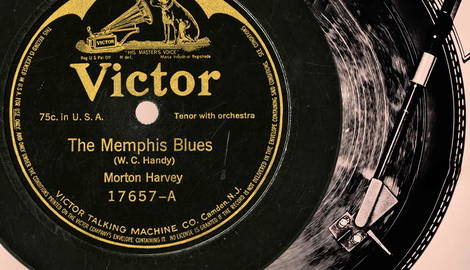
Like most music, the blues was not a sudden spontaneous inspiration. Rather, it is a progression of musical styles that emerged from African American culture. Most blue musicians hailed from the south initially, especially the Mississippi Delta. The blues spread north as time rolled on, going to places like St. Louis, Detroit, Chicago, and Haarlem. The first known blues recording occurred in 1908. Italian emigrant Anthony Maggio recorded “I Got the Blues” in New Orleans. “Memphis Blues” by W.C. Handy, published in 1912, proved wildly popular.
By 1940 and World War II, northern factory jobs were filled as African Americans came north, bringing the blues with them. Blues became popular but jazz had become the king. The blues went on to inspire other musicians, acting as a springboard for new sounds.
The Blues Structure

The blues developed its own structure and sound like its descendant genres. Other genres, too, borrowed heavily from their parent. Metal, for example, is known for blistering guitar solos. One pattern used in blues music is call and response. Here, the singer calls out a line, and the band replies with a comment. Blues became known for improvisation, with musicians jamming without sheet music or planning.
Blues and Relief

The blues influence also provided an outlet for expression. The blues became a form of expression as it had during its roots. Field workers sang of the drudgery as they toiled, using the call-and-response style. One person would call out, and the chorus would respond in agreement or answer the question. This often made the work easier. New Orleans, always busy, is a good example.
As a shipbuilding center, New Orleans supplied ships for naval and merchant use. That meant more employment. Skilled jobs like building ship distributors or mechanical work paid well for the time. That meant people had money to spend. They flocked to segregated clubs as racism still reined during these times. Clubs like the Dew Drop Inn let people blow off steam and relax.
Greater Exposure

The blues let early African American singers like Bessie Smith and Muddy Waters expand the music to a wider audience. As a woman singer, Bessie Smith faced two “isms” – racism and sexism. Born in 1894 and raised by a sister after her parent’s death, Bessie sang on street corners with her brother.
Dubbed “Empress of the Blues,” Bessie’s career thrived in the 1920s. She sang loud and boldly, using vulgar lyrics. Using her music, she encouraged women to be independent and party like men, let loose, and explore non-traditional relationships.
Her lyrics exposed injustices for being black and a woman. Her rise coincided with the blue’s increasing popularity nationwide. Her audience now included whites who enjoyed her music, breaking down barriers. Sadly, she died in a 1937 car accident.
McKinley Morganfield, or Muddy Waters, was born in Mississippi in 1913. He learned his craft, especially guitar and harmonica, playing in local bands. He went to Chicago, turning professional in the mid-1940s, recording his first album in 1946. His band introduced “Chicago Blues,” or blues with electric instruments like guitars, bass or harmonica
The British Blues Introduction

In 1958, Muddy Waters toured the U.K., introducing the blues to enthusiastic white crowds. Here, bebop and big bands were dominant but only for a time longer. Now fully versed in Chicago Blues with an immense stage presence, Muddy sang rough and tumble, sometimes raunchy but always powerful. He played like he would for a downhome crowd.
Though Muddy’s tour was brief, it did create some ripples. The recordings spread to young white British kids who’d take Muddy’s and other blues musicians’ sounds to heart. These kids were the likes of Eric Clapton, Mick Jagger, and The Who. Again, the blues proved more than just music. It’d weakened a barrier that would produce amazing rock bands only a decade later.
Hello Rock, R&B and Hip Hop

The blues anchored its place in American culture by the 1930s—America’s other unique music, jazz, borrowed from the blues. By the 1940s, jazz took off on its own to a white audience. Nazi Germany even banned jazz in the 1930s quickly, seeing it as evil! More current music forms like hip hop, and R&B drew from the blues, using it as a medium. These forms, like the blues, offer perspective on lives and struggles. The blues was more than a genre. Its influence touched different aspects of life, such as racism, poverty, and hope.








